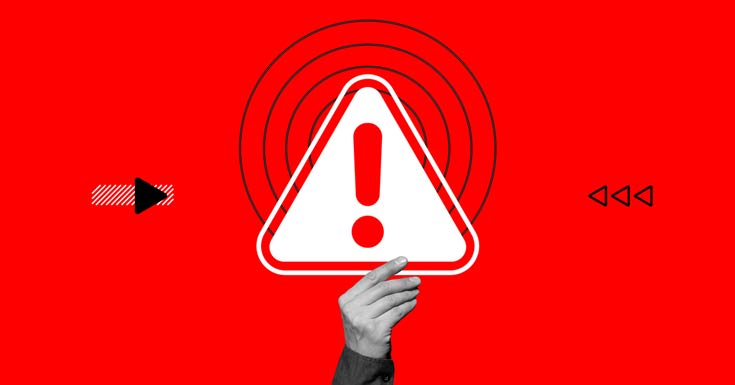A Cautionary Tale for Higher Education Leaders: Lessons from the AllHere Fraud Case
Former Analyst

In a recent high-profile case, the founder of an education technology startup, AllHere, which developed an AI chatbot for the Los Angeles Unified School District (LAUSD), has been charged with defrauding investors. The company is now in Chapter 7 bankruptcy.
LAUSD proudly publicized its new chatbot developed in collaboration with AllHere, “Ed,” as a groundbreaking solution for improving communication with parents and supporting individual student needs. Less than 3 months after launching the chatbot, the company collapsed, and the chatbot was abruptly shut down. Its owner is now charged with fraud and the district is out $3 million.
This incident highlights critical lessons that are applicable not only to K-12 education but also to higher education. With institutions increasingly relying on technology to streamline operations, enhance learning experiences, and engage students, this case serves as a harsh reminder of the importance of due diligence in conducting thorough vendor evaluations and ensuring transparency and accountability in technology partnerships.
The AllHere Fraud Case: A Brief Overview
In late 2023, LAUSD signed a five-year $6 million contract with AllHere. The school district launched its chatbot, “Ed,” in March 2024 as a personalized student advisor integrated with each student’s Individual Acceleration Plan. The chatbot could also answer frequently asked questions from parents on student grades and district resources, relieving administrative burden.
By June 2024, just 3 months later, AllHere furloughed most of their staff for financial reasons and Ed was abruptly taken offline. In November 2024, AllHere’s CEO was indicted by federal prosecutors for allegedly misrepresenting the company’s customer base and cash reserves to secure outside investment. She then misappropriated a portion of the funds for her personal gain, according to prosecutors.
Lessons for Higher Education Leaders
The lessons from this story extend beyond K-12. The questions on the table from this story regarding LAUSD’s technology selection process are equally relevant in the context of higher education technology selections: How was AllHere selected? Was the technology adequately assessed? Were the company’s background and expertise appropriately vetted? Were their claims verified? Were the contracts structured to protect the district?
As stewards of institutional resources, higher education leaders must approach vendor partnerships and technology adoption with a thorough understanding of the risks involved. Here are some critical takeaways:
1. Utilize Independent Market Research.
It’s easy to be swayed by a vendor’s slick presentation or glowing testimonials. But as the AllHere case illustrates, relying solely on what a company tells you can be dangerous. Independent verification of a product’s capabilities is essential. This includes consulting with analysts, contacting peer institutions, reviewing third-party evaluations, and running pilot programs to assess real-world performance. The stakes—financial, operational, and reputational—are high, particularly for publicly funded institutions.
2. Avoid Falling for Flashy Marketing.
New technologies can be alluring, especially when they promise to revolutionize how we teach, learn, or manage operations. However, higher education leaders must resist the temptation to adopt cutting-edge solutions simply because they’re trendy. Focus on tools that align with your institution’s strategic priorities and have demonstrated success in similar contexts.
3. Ask the Right Questions and Demand Transparency.
When evaluating a potential partner, it’s important to dig deeper than surface-level promises. Ask detailed questions about the technology’s development, its limitations, and how it has performed in similar settings. Be wary of when a vendor may be over-promising. Push for specific metrics and request case studies about other institutions that have used the product. These proof points help provide clarity on the real-world performance and potential issues that may arise. A reputable vendor will welcome scrutiny and provide data to back their claims.
4. Vet Vendors, Not Just Products.
It’s not just about the technology—it’s also about the people and the company behind it. Verify the vendor’s claims about their financial health, customer base, and product efficacy. Look beyond the surface-level financial statements. Engage third-party assistance to assess the vendor’s financial stability. Consider a vendor’s track record: Have they delivered on similar projects of similar scopes? Do they have a history of transparency and ethical behavior? More and more often in higher education, a vendor is a partner, and a vendor’s reputation and approach to collaboration are as critical as the product they’re selling.
5. Structure Contracts to Protect Your Institution.
Contracts with vendors should include clear performance benchmarks, accountability measures, and exit clauses. This ensures the institution is not locked into an arrangement that could become a financial or operational liability if the technology underperforms. Work with legal counsel to ensure essential coverage of sensitive items like data privacy.
6. Implement Robust Oversight Mechanisms.
The AllHere case highlights the broader challenge of balancing innovation with prudence. Higher education institutions are often under pressure to adopt the latest tools to stay competitive, particularly in an era of declining enrollments and growing demand for personalized student services. However, the pursuit of innovation must be tempered by rigorous evaluation processes and a commitment to long-term sustainability.
Institutions should establish oversight mechanisms to monitor ongoing projects and partnerships. Regular audits and performance reviews to review financial transactions, project milestones, and compliance with contractual obligations can help detect issues early and mitigate risk. Leaders must build institutional capacity for assessing technology beyond the capabilities of any single product. This might involve creating cross-functional committees for vendor evaluation, investing in training for staff who will oversee implementation, or developing internal guidelines for technology adoption.
7. Learn from Others.
The AllHere case serves as a cautionary tale. Higher education leaders should stay informed about industry developments and learn from the experiences of other institutions to avoid similar pitfalls. Stay updated with industry news and trends. Participate in professional networks and forums to share insights and learn from peers. Review case studies of both successful and failed partnerships. Understanding the factors that led to different outcomes can provide valuable lessons for future decisions.
Final Thoughts
This story is a harrowing reminder of the need to be vigilant. Fraud happens. Did LAUSD, the second-largest school district in the nation with an annual budget of over $18 billion, make mistakes? Why was AllHere selected? Was it possible this fraud could have been detected, if LAUSD had asked the right questions? LAUSD’s task force assigned to investigate may find some of the answers.
For higher education leaders, it is clear that strategic leadership informed by independently validated data and insights is essential for navigating the ever-evolving landscape of educational technology. By prioritizing transparency, accountability, and thorough vetting in technology partnerships, institutions can avoid similar pitfalls and position themselves to make impactful, sustainable investments.
Beyond protecting themselves from fraud, institutions should heed the lessons discussed here when working with any vendor, as vendors will, in most circumstances, present their products in the best possible light. Their objective is to sell, not to make the best decisions for the institution. That duty falls to institutional leaders. In an era where technology promises to transform education, a thoughtful, measured approach is not just prudent—it’s essential.
Categories
Share Article:

Other Posts From this Author:
© Copyright 2025, The Tambellini Group. All Rights Reserved.